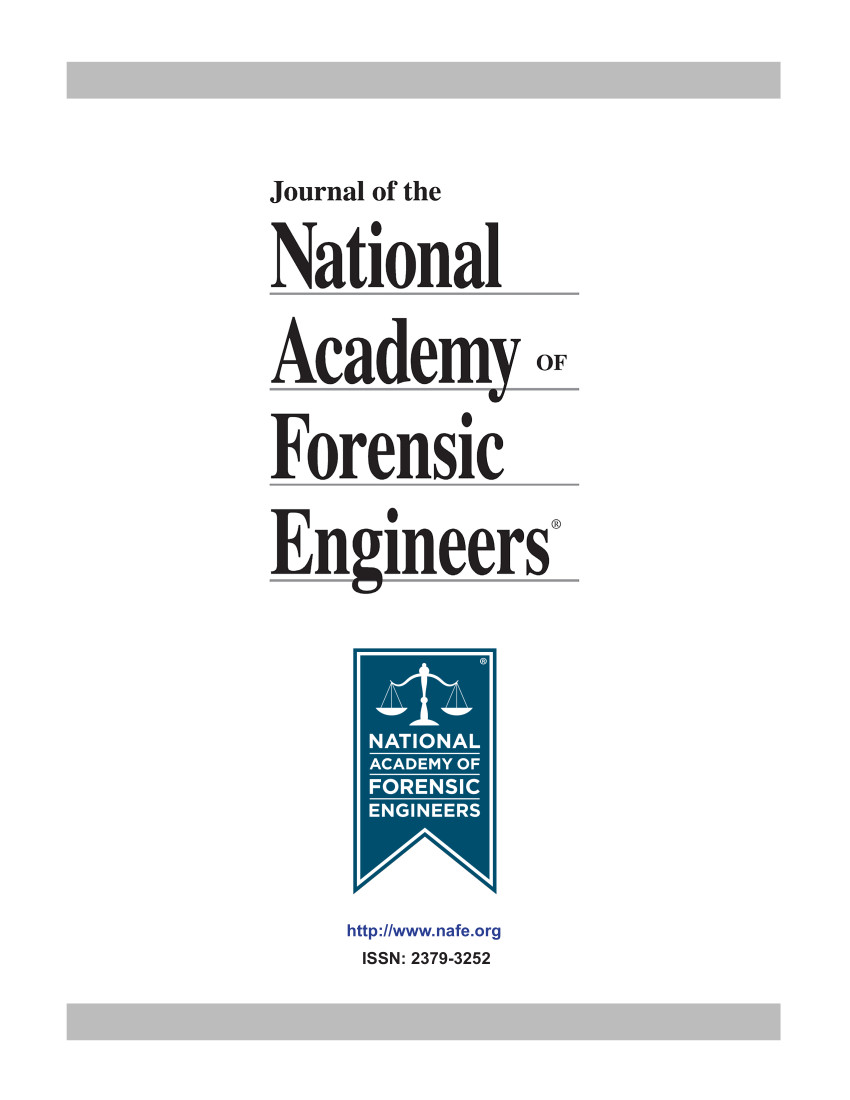Forensic Engineering Review Of The Critical Speed Formula
DOI:
https://doi.org/10.51501/jotnafe.v22i2.645Keywords:
Accident reconstructionAbstract
A Discussion Of Vehicle Speed Estimation From Yaw Marks Found At A Crash Scene By Applying The Critical Speed Formula (Csf) Has Been Ongoing For Several Years. Many Have Defended The Use Of The Csf By Unscientific Demonstrations. Others Have Shown That Errors In Measurement And Tire Tractive Forces Lead To False Speed Calculations When Using Csf. While This Controversy Over Its Accuracy Goes On, The Csf Is Used Throughout The Country By Law Enforcement And Its Results Are Routinely Admitted As Evidence In Both Civil And Criminal Procedures. This Paper Makes An In-Depth Examination Of The Physics Underlying The Cfs And Results Of Vehicle Tests Designed To Simulate Highway Experience. Unmanned Vehicles Were Given An Initial Speed Followed By A Hard Steering Input. They Were Then Allowed To Decelerate To A Stop Without Braking. Tire Marks On The Pavement Were Examined And Yaw Tracks Were Measured Using A Total Station (A Precision Instrument). The Measurements Produced Results That Are Inconsistent With The Physics Of The Csf And The Coefficient Of Friction. The Authors Conclude That The Underlying Theory Of The Cfs Does Not Follow The Laws Of Physics And The Methods Of Data Collection And Analysis Introduce Un-Quantifiable Error. The Authors Recommend That The Reconstruction Of Highway Crashes Not Use The Critical Speed Formula To Determine The Speed Of Vehicles.Published
2005-01-01
How to Cite
DOnofrio, John A. 2005. “Forensic Engineering Review Of The Critical Speed Formula”. Journal of the National Academy of Forensic Engineers 22 (2). https://doi.org/10.51501/jotnafe.v22i2.645.
Issue
Section
Articles
License
Copyright (c) 2005 National Academy of Forensic Engineers

This work is licensed under a Creative Commons Attribution-NoDerivatives 4.0 International License.
All rights © Journal of the National Academy of Forensic Engineers.
Full statement regarding the author's license of copyright to the NAFE is shown on the Copyright section of the Submissions Page.






